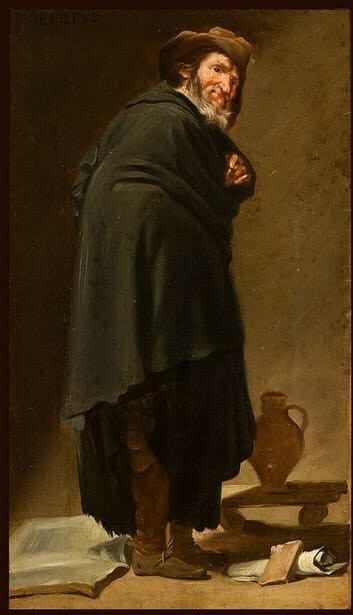- Cronología
- Ca. 1778
- Ubicación
- Museo Goya. Colección Ibercaja, Zaragoza, Spain
- Dimensiones
- 43 x 24,5 cm
- Técnica y soporte
- Oil on canvas
- Reconocimiento de la autoría de Goya
- Attributed work
- Ficha: realización/revisión
- 10 Oct 2022 / 08 Jun 2023
- Inventario
- 225
AESOPVS (upper left-hand corner)
See the previous painting Menippus, of the same origin and with which it forms a pair.
See the previous painting Menippus,
Velazquez painted the imaginary portraits of the ancient Greek philosophers Menippus and Aesopus to be part of the decoration of the Torre de la parade, along with other works of Rubens. The reductions attributed to Goya are clear evidence of this interest in internalising the work of the Sevillian master.
Aesopus lived between the seventh and sixth century B.C. first as a salve and later as a freeman. Velázquez depicted him as mature, white-haired man with a tired, dressed in a brown sackcloth fastened at the waist with a white cloth. In one of his hands he holds a book while the other is hidden under the ragged tunic, at waist level. At his feet is a stone on which, according to Cesare Ripa (Perugia, 1555 - Rome, 1622), the phlegmatic should sit. In the upper right corner it is possible to read the word AESOPUS that serves to identify the character, lacking any other characterization.
-
Zaragoza1981cat. 89
-
San Sebastian1989cat. 53
-
ZaragozaImprenta de M. Peiró1842p. 16
-
Zaragoza1926p. 44
-
Zaragoza1981pp. 92-96
-
Zaragoza1981

